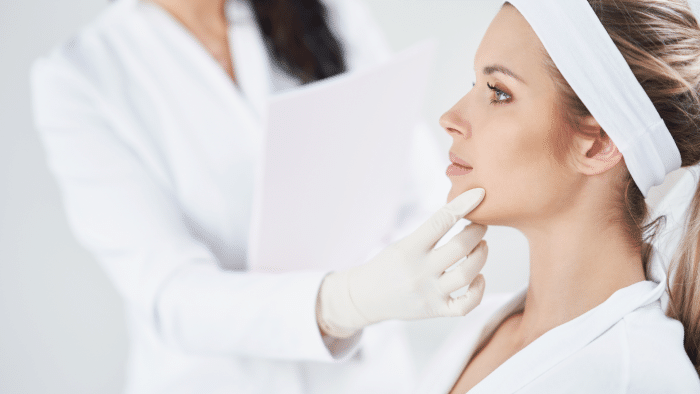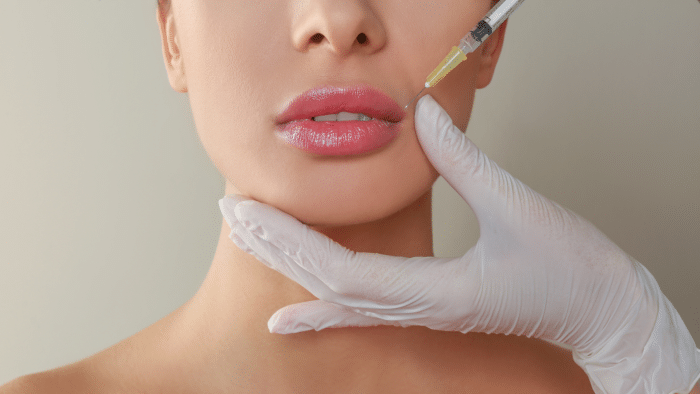
A recent study comparing hyaluronic acid fillers revealed significant differences in their efficacy and duration of effects. This highlights the importance of choosing the right type of filler for aesthetic treatments, particularly in the delicate periorbital area.
Two specific products stand out in the market: Juvederm and Restylane Kysse. Both are renowned for their ability to create fuller, more youthful lips, yet they differ in composition and the naturalness of their results. Juvederm is known for its immediate volumizing effect, while Kysse is praised for its natural feel and movement.
In this article, we will explore the nuances of Juvederm and Kysse, comparing their properties, application techniques, and patient satisfaction outcomes.
Key Takeaways
- Juvederm and Restylane Kysse are both hyaluronic acid fillers used for lip enhancement.
- Juvederm fillers have a range of formulations designed for different treatment areas and concerns, while Kysse is formulated explicitly for natural-looking lip enhancement.
- Differences in formulation, properties, and patient experience should be considered when selecting between Juvederm and Kysse fillers.
- Injection techniques, dosing guidelines, and potential adverse effects are important factors when using these fillers for lip enhancement.
About: Doctor Medica is your trusted supplier of top-quality dermal fillers, viscosupplements, and more for your medical practice. We offer genuine products from leading brands at the lowest prices. Contact Doctor Medica today if you want to buy Juvederm wholesale for your practice.
Understanding Juvederm and Kysse Fillers

Juvederm fillers are a big part of today’s facial rejuvenation tools. Made from hyaluronic acid (HA), they help smooth wrinkles and plump lips and bring back softness to the face. Doctors like them because they work well and last long.
Part of the Restylane family, Kysse is specially crafted for lip augmentation and reshaping. This filler uses a unique cross-linking technology that blends smoothly with your lips’ natural texture. The main ingredient, hyaluronic acid (HA), is a sugar in our body, making it safe and effective for enhancing lip volume and defining contours.
Differences in Formulation and Properties

Juvederm fillers stand out because they use a unique crosslinking technology in their hyaluronic acid. This tech turns the acid into a smooth, gel-like material. The process ensures that Juvederm easily blends into the skin for natural-looking results when injected.
Kysse fillers stand out with their unique formula. They use technology that gives them a flexible consistency, which means they can move naturally with your lips. The main ingredient is hyaluronic acid, just like in Juvederm. However, the way Kysse is made allows it to blend smoothly into the lip tissue.
Juvederm fillers stand out because they offer a wide range of HA concentrations. This feature allows medical professionals to choose the perfect match for each patient’s needs. Their gel is unique, too, thanks to a process called cross-linking.
Restylane Kysse stands out with its unique ability to blend durability, natural-looking results, and a comfortable feeling post-injection. Its unique formulation allows for easy integration into the skin.
Clinical Applications and Patient Experience

Juvederm fillers excel in lip enhancement, plumping and lifting lips for a youthful look. Studies show that even with less product used, Juvederm achieves excellent results for fuller lips.
Doctors use them to give patients more kissable lips with a natural look. They’re great at adding volume and smoothing lines around the mouth. Studies show that Kysse does a fantastic job at enhancing lip fullness safely and effectively. It uses hyaluronic acid gel to boost collagen, which helps make lips look smoother and plumper without looking fake.
Considerations for Selecting Between Juvederm and Kysse Fillers
- Patient Preferences and Treatment Goals: Patient preferences and treatment goals are crucial to deciding between Juvederm and Kysse fillers for lip enhancements. Each person has an idea of what they want their lips to look like.
- Anatomical Considerations for Lip Enhancement: Anatomical considerations are crucial in choosing between Juvederm and Kysse for lip enhancement. Each person’s lips have unique shapes, sizes, and structures that influence the outcomes of filler injections.
- Longevity and Maintenance of Results: Juvederm fillers, which can last up to 24 months, offer a long-lasting solution for those looking to maintain fuller lips. A touch-up after 12 months can help keep the desired look. Restylane Kysse also promises durable effects, providing fullness for around one year. Due to their non-permanent nature, both options need potential re-treatment after about 12 months.
- Cost Considerations and Availability: Each offers unique advantages for lip enhancement, but remember, insurance does not cover these cosmetic procedures.
Injection Techniques and Dosing Guidelines
The process requires a refined touch for the best lip enhancement results. Here’s a look at how medical professionals can use injection techniques the fillers effectively:
- Start with a Clean Slate: Always cleanse the lip area thoroughly to reduce the risk of infection. Make sure your hands and tools are sterile.
- Mark the Target Areas: Use a gentle skin marker to outline where you will inject the Kysse filler. This step ensures accuracy and helps achieve symmetrical results.
- Choose the Right Needle or Cannula: Depending on the area of the lips being enhanced, decide between a fine needle or a soft cannula for more comfortable injections.
- Go Slow with the Injection: Inject Kysse filler slowly to minimize discomfort and allow precise product placement.
- Use Proper Angling: Angle the needle correctly—usually parallel to the lip—to distribute filler evenly and avoid lumps.
Each patient’s needs are unique, calling for a customized plan. It’s essential to discuss expected outcomes beforehand. For subtle plumping or smoothing fine lines around the mouth, less product might be needed.
Potential Adverse Effects and Risk Mitigation
Fillers like Restylane Kysse or Juvederm Ultra in the lips can cause side effects like swelling, redness, and pain. These shared reactions are usually mild and go away on their own. Sometimes, people notice lumps or feel the treated area is firmer than usual.
When switching from Juvederm to Kysse fillers, the conversation about safety and side effects continues. Kysse fillers have unique risks that patients and doctors should be aware of. Rare but serious problems can happen, such as lumps, bumps, itching, skin color changes, and infection.
Safety comes first and always. That’s the rule when using hyaluronic acid fillers like Juvederm and Restylane. Medical professionals need strategies to keep risks low.
Conclusion
Choosing between Juvederm and Kysse fillers for lip enhancement is like picking your favorite ice cream flavor—they both have their sweet spots! Juvederm offers the soft, natural fullness many crave.
Conversely, Kysse brings flexibility and movement to the lips, making smiles even brighter. Both options use hyaluronic acid to turn back time on your lips. It all comes down to what you want your smile to say about you.
FAQs
1. What’s the main difference between Juvederm and Kysse?
Juvederm tends to last a bit longer, while Kysse offers more natural movement with your lips.
2. Can both Juvederm and Kysse be used for lip enhancement?
Yes, both fillers are great for adding volume to your lips.
3. How long do the results from Juvederm and Kysse last?
Juvederm can last up to a year, and Kysse might need a touch-up sooner.
4. Are there any side effects with these fillers?
You might see some swelling or bruising, but it usually disappears quickly.
5. Is one filler better than the other for first-timers?
Nope, both are solid choices; it just depends on what look you’re going for.
References
Polacco, M. A., Singleton, A. R., Luu, T., Maas, C. S. (2021). A Randomized, Blinded, Prospective Clinical Study Comparing Small-Particle Versus Cohesive Polydensified Matrix Hyaluronic Acid Fillers for Treating Perioral Rhytids. Aesthetic Surgery Journal, 41(6), NP493–NP499. https://doi.org/10.1093/asj/sjaa161
Hilton, S., Sattler, G., Berg, A. K., Samuelson, U., & Wong, C. (2018). Randomized, Evaluator-Blinded Study Comparing Safety and Effect of Two Hyaluronic Acid Gels for Lips Enhancement. Dermatologic surgery: official publication for American Society for Dermatologic Surgery [et al.], 44(2), 261–269. https://doi.org/10.1097/DSS.0000000000001282
Weiss, R., Beer, K., Cox, S. E., Palm, M., Kaufman-Janette, J., Bassichis, B., Biesman, B., Joseph, J., Almegård, B., Nilsson, A., & Edwartz, C. (2021). A Randomized, Controlled, Evaluator-Blinded, Multi-Center Study of Hyaluronic Acid Filler Effectiveness and Safety in Lip Fullness Augmentation. Dermatologic surgery: official publication for American Society for Dermatologic Surgery [et al.], 47(4), 527–532. https://doi.org/10.1097/DSS.0000000000002856
Related Articles
Joanna Carr
Profhilo Neck – Lift and Tighten
Profhilo is a hyaluronic acid-based injectable treatment designed to rejuvenate the neck area. It stimulates collagen and elastin production, resultin...
Joanna Carr
Profhilo vs Sculptra – Comparing Fillers
Profhilo is a pure hyaluronic acid product, while Sculptra contains poly-L-lactic acid (PLLA). Both treatments have minimal side effects, with results...
Joanna Carr
Prolia vs Reclast – Differences Explained
Prolia and Reclast are both osteoporosis treatments, but they differ in mechanism, administration, and long-term effects. Compare their efficacy and s...


